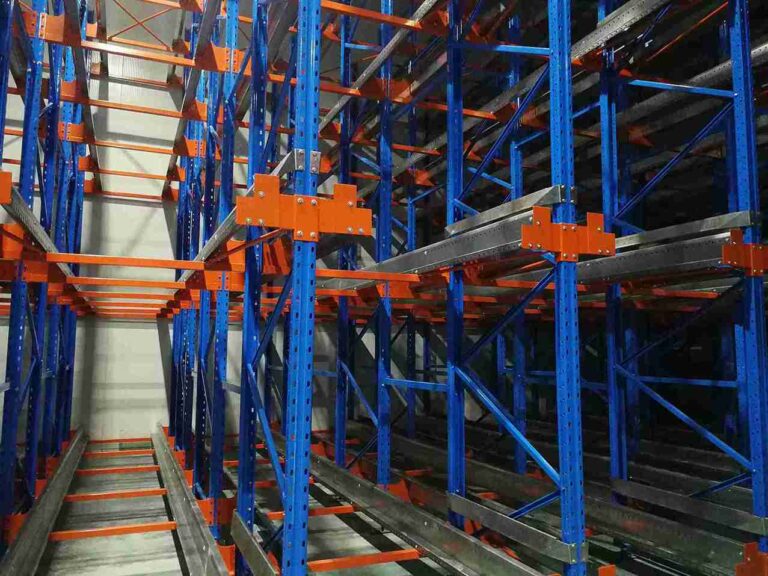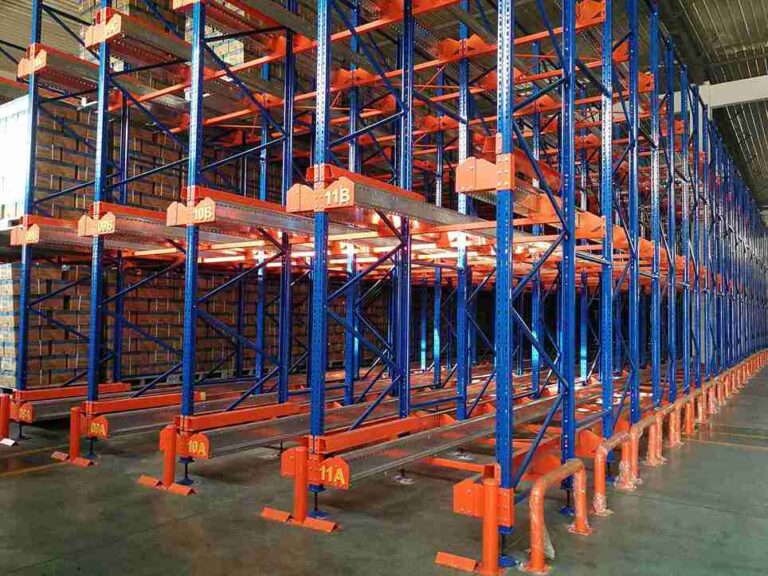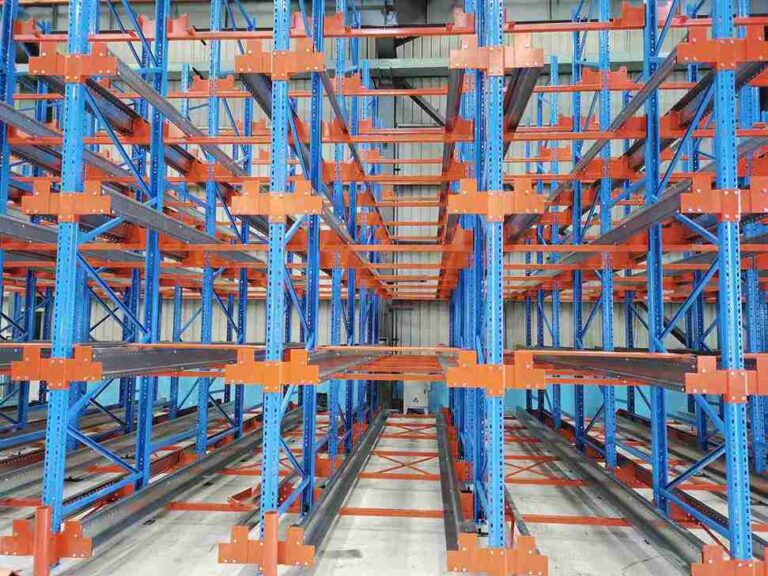📐 "First 50 Enterprise Queries Get Custom 3D Warehouse Design" Plan

The Power of Shuttle Racking for Labor Cost Reduction
In an era where warehouse operational costs continue to rise, businesses are actively seeking solutions to reduce labor expenses without sacrificing efficiency. Shuttle racking labor cost savings have become a critical factor in modern warehouse design, offering companies a way to slash payroll expenses while improving throughput.
This in-depth guide explores how shuttle racking labor cost savings transform warehouse operations by minimizing manual labor, accelerating workflows, and maximizing storage density. From system mechanics to real-world ROI calculations, we provide actionable insights for businesses looking to optimize labor costs with shuttle racking automation.

H1: Understanding Shuttle Racking and Its Impact on Labor Costs
H2: How Shuttle Racking Systems Work to Reduce Labor Dependency
Unlike traditional pallet racking that relies on forklifts and manual handling, shuttle racking labor cost savings come from automation. These systems use motorized shuttles that travel inside storage lanes, autonomously transporting pallets with minimal human intervention.
Key features that contribute to shuttle racking labor cost savings:
- Automated pallet movement eliminates the need for multiple forklift operators.
- Precision handling reduces product damage and rework labor.
- 24/7 operation capability allows for continuous workflow without shift changes.
H3: Comparing Shuttle Racking vs. Conventional Storage Systems
A side-by-side analysis reveals why shuttle racking labor cost savings outperform traditional methods:
| Factor | Traditional Racking | Shuttle Racking |
|---|---|---|
| Labor Required | 5-6 forklift operators | 1-2 system supervisors |
| Pallets Moved/Hour | 20-30 | 60-80 |
| Error Rate | 3-5% | <1% |
| Labor Cost Reduction | Baseline | 40-70% savings |
H4: The Role of Software in Enhancing Labor Efficiency
Modern shuttle racking labor cost savings are amplified by integrated warehouse management systems (WMS) that:
- Automatically assign pallet locations based on turnover rates
- Optimize shuttle routes to minimize empty travel
- Provide real-time inventory tracking, eliminating manual cycle counts
H1: Quantifying Shuttle Racking Labor Cost Savings
H2: Direct Payroll Reductions from Automation
The most immediate shuttle racking labor cost savings come from reduced staffing needs:
- A typical mid-sized warehouse employing 8 forklift operators per shift can reduce this to 2-3 technicians overseeing automated systems.
- Eliminating overtime costs associated with manual picking during peak seasons.
- Reducing training expenses since shuttle systems require less specialized labor than forklift certification.
H3: Indirect Labor Cost Reductions
Beyond direct payroll, shuttle racking labor cost savings extend to:
- Lower workers’ compensation claims (automation reduces workplace injuries by up to 60%)
- Decreased recruitment costs (automated facilities experience 45% less turnover)
- Reduced supervisory overhead (automated systems generate performance reports without managers manually tracking productivity)
H4: Real-World Case Study: 68% Labor Cost Reduction
A European retail distributor implemented shuttle racking across their 150,000 sq. ft. facility, achieving:
✅ 68% reduction in labor costs within 18 months
✅ 55% faster order processing with same workforce size
✅ ROI achieved in 2.3 years through cumulative savings
H1: Optimizing Shuttle Racking for Maximum Labor Savings
H2: System Configuration Strategies
To maximize shuttle racking labor cost savings, leading warehouses employ:
- Multi-depth lane configurations that minimize shuttle repositioning
- Dynamic slotting algorithms that automatically place fast-moving SKUs in most accessible positions
- Integrated pallet conveyors that eliminate manual transfer points
H3: Workforce Transition Planning
Successful implementation of shuttle racking labor cost savings requires:
- Cross-training existing staff on system monitoring rather than manual handling
- Phased implementation to allow gradual workforce adjustment
- Performance-based incentives for employees adapting to new automated workflows
H4: Maintenance Considerations for Sustained Savings
Protecting long-term shuttle racking labor cost savings involves:
- Predictive maintenance schedules to avoid unexpected downtime
- Spare shuttle inventory to maintain throughput during servicing
- Remote monitoring capabilities that reduce on-site technician requirements
H1: The Future of Labor Optimization in Warehousing
Emerging technologies will further enhance shuttle racking labor cost savings:
- AI-powered load optimization that automatically balances pallet weights
- Autonomous mobile robot (AMR) integration for end-to-end automation
- Blockchain-enabled inventory tracking that eliminates manual reconciliation
Conclusion: Transforming Warehouse Economics Through Automation
The shuttle racking labor cost savings demonstrated across industries prove that automation delivers both immediate and long-term financial benefits. Companies implementing these systems gain:
✔️ Substantial reductions in direct labor expenses
✔️ Improved operational metrics that enhance customer satisfaction
✔️ Future-proof operations ready for next-gen supply chain demands
For operations managers seeking provable labor cost reductions, shuttle racking automation represents one of the most impactful investments available today.
FAQs
1. What’s the typical payback period for shuttle racking labor cost savings?
Most facilities achieve full ROI within 24-36 months through combined labor and efficiency gains.
2. Can shuttle systems handle mixed SKU warehouses?
Advanced WMS integration enables dynamic handling of diverse product profiles while maintaining labor savings.
3. How do labor savings compare between shuttle and AS/RS systems?
Shuttle systems typically deliver 15-20% greater labor cost reductions due to lower system complexity.
4. What warehouse sizes benefit most from shuttle racking labor cost savings?
Facilities between 50,000-500,000 sq. ft. see the most dramatic impacts on labor economics.
5. How does automation affect workforce morale during implementation?
Properly managed transitions actually improve employee satisfaction by removing repetitive heavy labor.
Welcome to contact us, if you need warehouse rack CAD drawings. We can provide you with warehouse rack planning and design for free. Our email address is: jili@geelyracks.com




